
JAPANESE PRINTS
A MILLION QUESTIONS
TWO MILLION MYSTERIES
Ukiyo-e Prints浮世絵版画 |
|
formerly Port Townsend, Washington now Kansas City, Missouri |
|
UTAGAWA KUNIYOSHI |
|
|
歌川国芳 |
|
|
1797-1861 |
|
|
Subject: The
Asagao monogatari |
|
|
The actor Ichikawa Danjūrō VIII as Miyagi Asojirō in the center panel |
|
|
Bandō Shuka as Miyuki, the daughter of Akitsuki |
|
|
Sizes: Left Panel: 14 1/4" x 9 1/2" Right Panel: 14 1/4" x 9 5/8" |
|
|
Date: 1848 This play was performed at the Ichimura-za in the 8th Month, 1848. |
|
|
Censors: Mera & Murata
|
|
|
米良 |
村田 |
|
Signature: Ichiyūsai Kuniyoshi ga
署名: 一勇斎国芳画 |
|
|
Publisher: Minatoya Kohei
湊屋小兵衛 |
|
|
Condition: Good color. Several wormholes on both prints (see below), small pin prick holes, slight soiling, Japanese album backing on both. These prints are separated, i.e., unattached. |
|
|
There are other copies of the whole triptych in the collection of the Hankyu Culture Foundation and in the British Museum. |
|
|
$580.00 SOLD! |
|
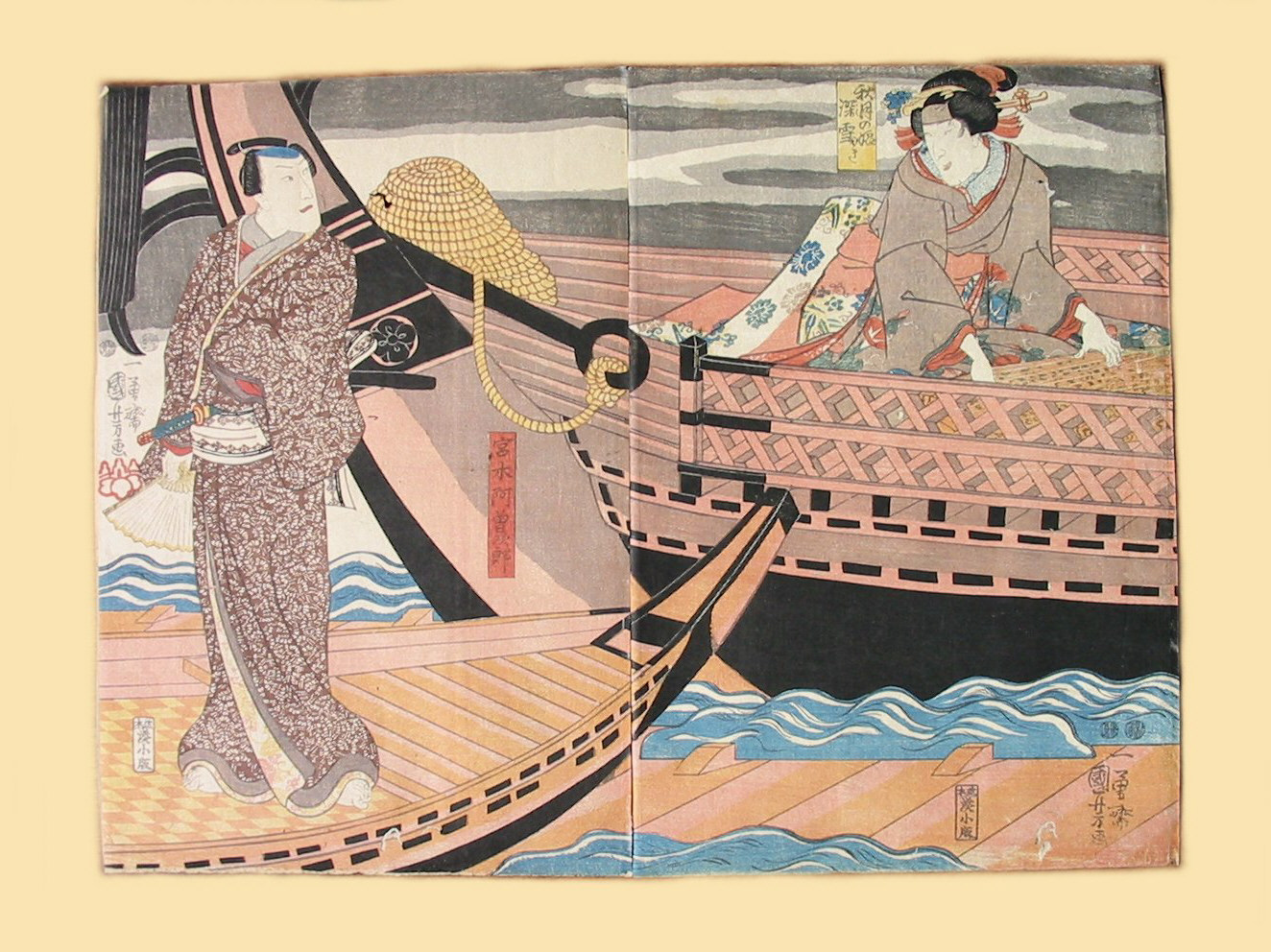
|
|
|
|
|
|
|
|
|
|
||
|
|
|
|
|
|
|
|
#1 |
Recently one of our visitors asked for a detailed condition report. That is why we have added this section - for the sake of truth in advertising. This also displays more accurately the true colors.
The image of the two prints shown together were captured by a digital camera while the example with the numbers directly above is from a scanner which relates the true colors with far greater clarity. Please take time to note the dramatic differences. |
#2 |
|
|
|
#3 |
#4 |
#5 |
|
|
|
|
|
|
|
|
BREAKING THE MAGICAL ILLUSION |
|
|
|
|
|
Above is a detail from the right-hand image featured on this page. Shown clearly are the wedge shaped footing for the very two dimensional painted waves which while stationery are meant to give the illusion of movement. Had you noticed this before?
|
|
Timothy Clark cites a specific print by Bunchō in which the artist "deliberately breaks the magical illusion of the theater." In that example there is an actor in a female role standing at the front of the stage with three enthusiastic spectators gesticulating near his feet. "...it shows an actor on stage interacting with his audience; it shows the boards of the stage as boards and the trunk of a stage tree as a flat piece of scenery supported by a wooden pillar behind." Prior to 1780s, Clark points out, the sense of theatrical staging was missing. Each actor existed only within the realm of the story and not as a performer on stage. However, Bunchō changed all that by breaking through that psychological barrier previously left unaddressed.
Quotes from: The Actor's Image: Print Makers of the Katsukawa School, Timothy Clark, Osamu Ueda and Donald Jenkins, Princeton University Press, 1994, p. 52. |
|
|
|
THAT "OH, I DIDN'T NOTICE THAT" FACTOR |
|
|
|
In 1946 Jean Cocteau directed "La Belle et la BÍte" (Beauty and the Beast). Based on an 18th century fable the movie was filled with wondrous scenes. One didn't have to speak French to be caught up in the marvel of it. In one scene the beast produces a pearl necklace out of thin air. One can do that with cinema. However, it wasn't until some time after I saw that trick that I watched a program that revealed secrets of the special effects and said to myself "Oh, so that's how they did it." Much of the magic was lost, but at the same time I gained a greater respect for the director and cinematographers and still loved the original.
As a small child my school classes were periodically bussed to a local theater so we could see a live theatrical production. At first it was obviously that the rocks, trees and water and such were fakes, but as the play continued - especially if it was a good and enthralling one - those stage props somehow became more real - or should I say less unreal?
A huge percentage of ukiyo prints represent theatrical productions. Familiarity with this genre gives the casual viewer and/or serious collector a more experienced eye. Often there is an instant recognition that a print must commemorate a particular moment in a particular production of a particular play. Less obvious are the tell tale signs of the behind the scenes efforts which produced the physical stage and its props. Yet every once in a while you will run across a print which shows these elements. Sometimes they are more subtle and it takes years of looking to notice them, but at other times they just jump right out at you.
Below are two more examples of the more obvious kind. |
|
|
|
Above is a cropped detail of a print by Kuniaki II which makes no pretense that the actor is anywhere other than on a stage. Even the grassy hillock behind him is clearly a painted prop which acts as a skirting to a slightly higher platform. |
|
|
|
Above is a cropped detail from an 1827 Osaka print by Yoshikuni. Again there has been no attempt at artifice. (To see the whole print click on the image.) |
|
The detail below from the right panel clearly shows morning glories decorating the outer robe of the woman playing the koto. The Japanese word for this flower is asagao (朝顔) and is used to by several translators of The Tale of Genji for the title of Chapter 20. (Royall Tyler in his wonderful new translation gives asagao as 'The Bluebell'.)
|
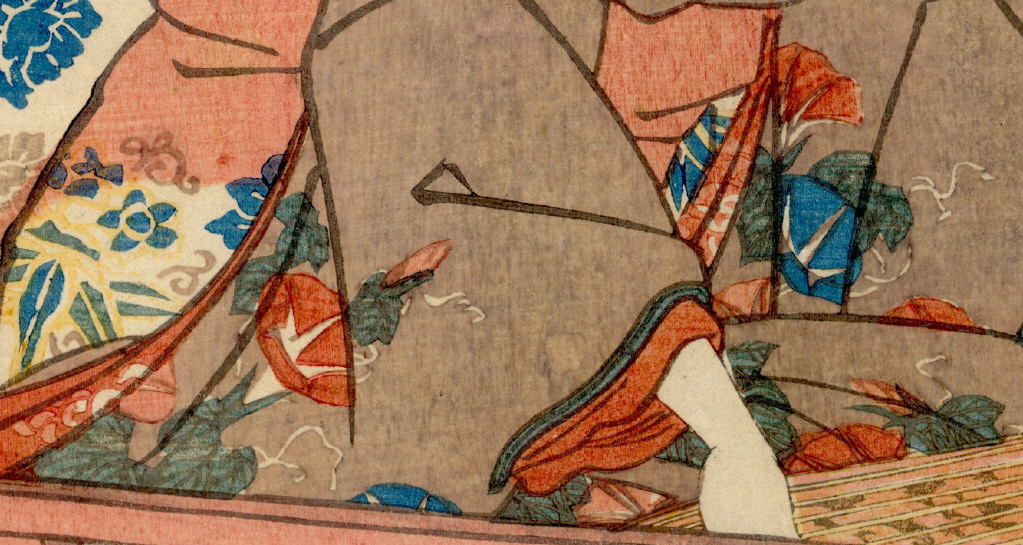 |
|
AS NOTED ABOVE THE TWO PANELS FEATURED ON THIS PAGE ARE TWO THIRDS OF A TRIPTYCH. A FULL EXAMPLE OF THIS TRIPTYCH IS SHOWN BELOW. |
||
|
|
|
One source says that the figure of the blind musician on the far left represents zagashira Yukinoichi. Zagashira (座頭) means leader of a troupe.
A British Museum web page identifies this actor in the left-hand panel as Ichimura Uzaemon XII as the blind female minstrel Chiku-no-tsu |
|
|
||
|
|
||
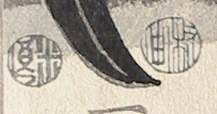
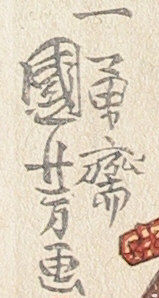

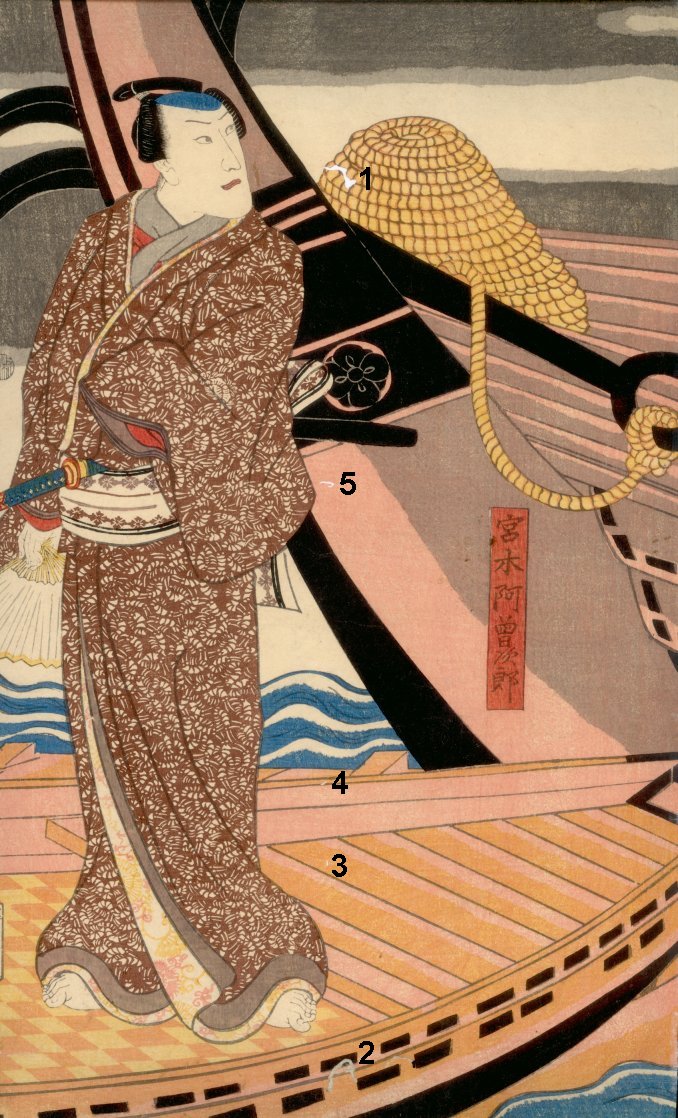
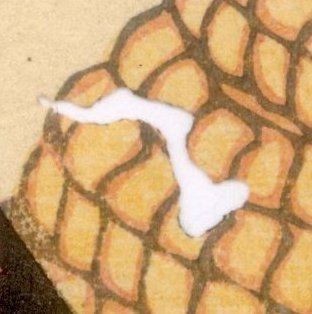
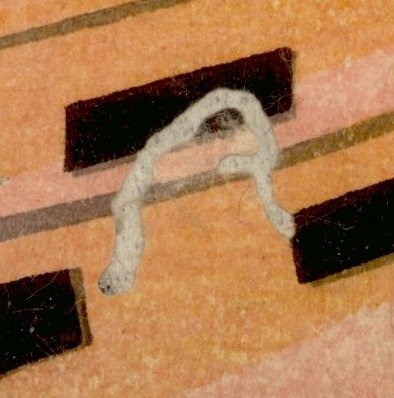
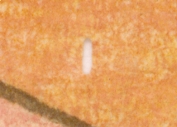



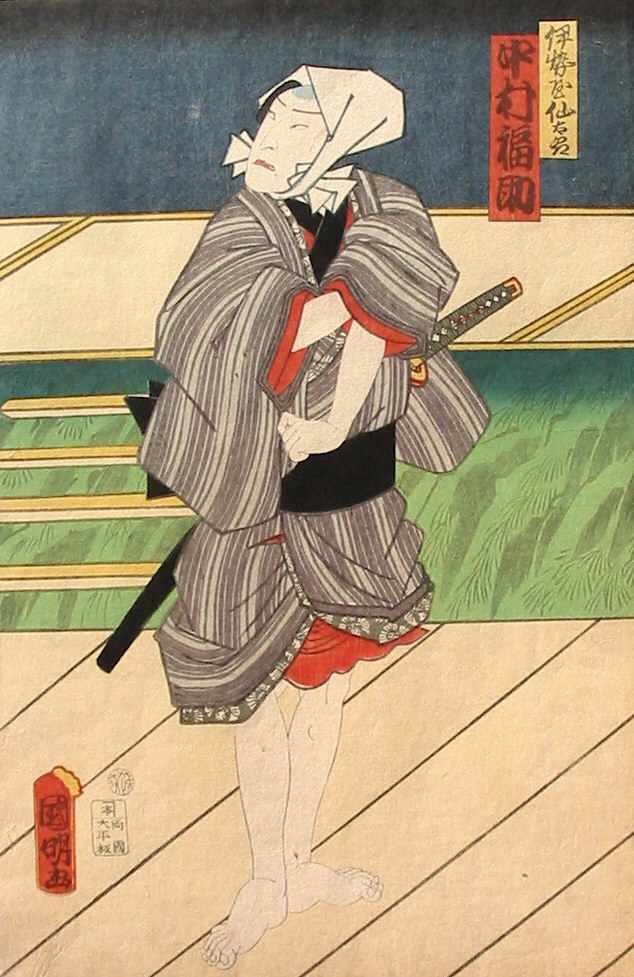


 HOME
HOME